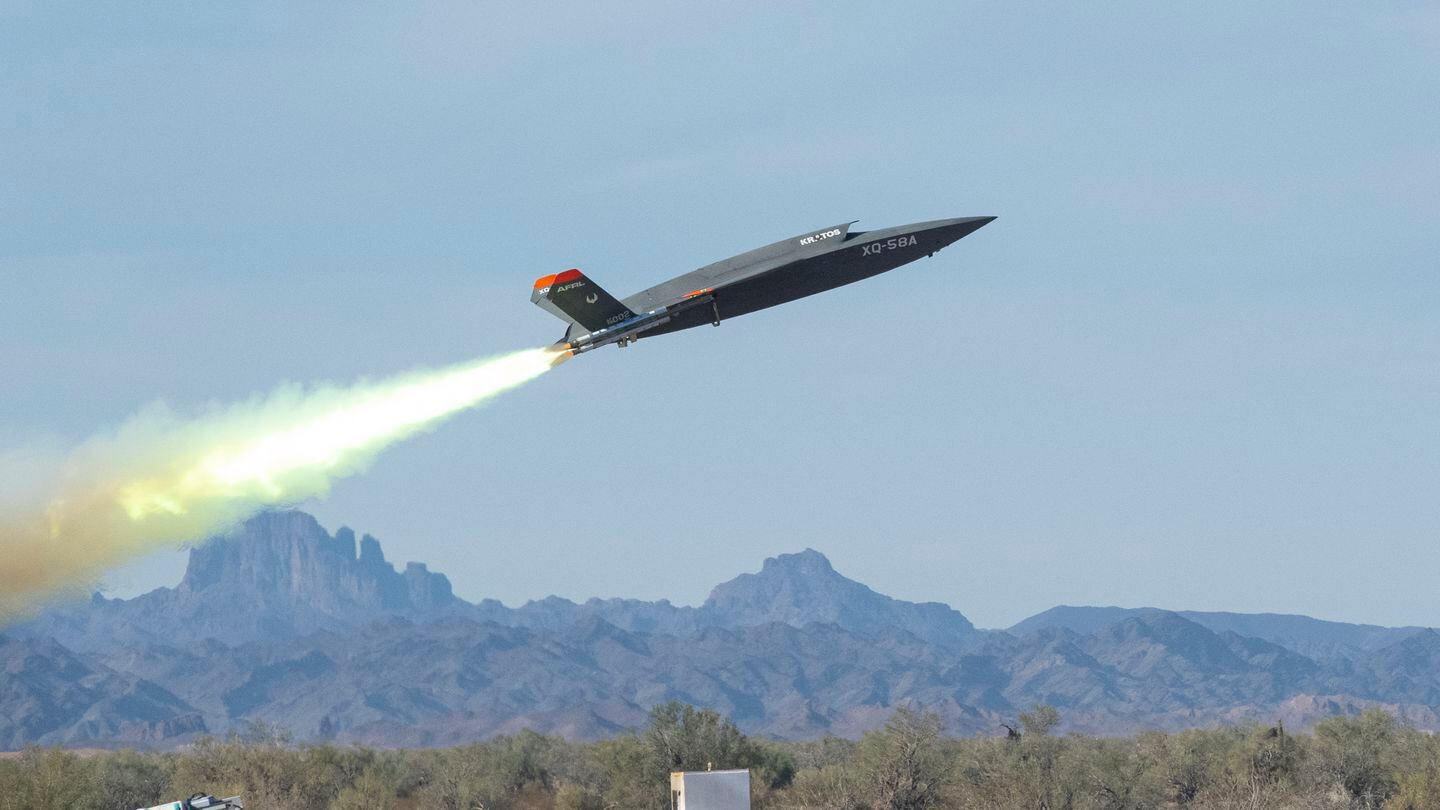
WASHINGTON — Artificial intelligence software successfully flew an XQ-58A Valkyrie drone, the Air Force Research Laboratory announced Aug. 2.
The U.S. lab led the three-hour sortie on July 25 with test units at the Eglin Test and Training Complex in Florida. The flight followed two years of work and a partnership with Skyborg Vanguard, a team made up of personnel from the lab and the Air Force Life Cycle Management Center with the intent of creating unmanned fighter aircraft.
“This sortie officially enables the ability to develop [artificial intelligence and machine learning] agents that will execute modern air-to-air and air-to-surface skills that are immediately transferrable to the CCA program,” said Col. Tucker Hamilton, the chief of AI test and operations with the Air Force. The CCA program, or collaborative combat aircraft, was designed to create combat drones that can operate with piloted aircraft.
The lab’s Autonomous Air Combat Operations team created algorithms for the flight that took millions of hours to mature in simulations, during sorties with the X-62 VISTA experimental aircraft, while working with the XQ-58A, and during ground test operations, according to the announcement.
Previous flights of the XQ-58A Valkyrie have supported the Air Force’s effort into loyal wingmen research. Kratos Defense and Security Solutions produces the drone.
The Air Force Research Lab is the service’s primary scientific research and development center responsible for the discovery, development and integration of cost-effective warfighting technologies for the country’s air, space and cyberspace forces.
“AI will be a critical element to future warfighting and the speed at which we’re going to have to understand the operational picture and make decisions,” Brig. Gen. Scott Cain, the lab’s commander, said in the announcement. “AI, Autonomous Operations, and Human-Machine Teaming continue to evolve at an unprecedented pace and we need the coordinated efforts of our government, academia, and industry partners to keep pace.”
Georgina DiNardo is an editorial fellow for Military Times and Defense News and a recent graduate of American University, specializing in journalism, psychology, and photography in Washington, D.C.